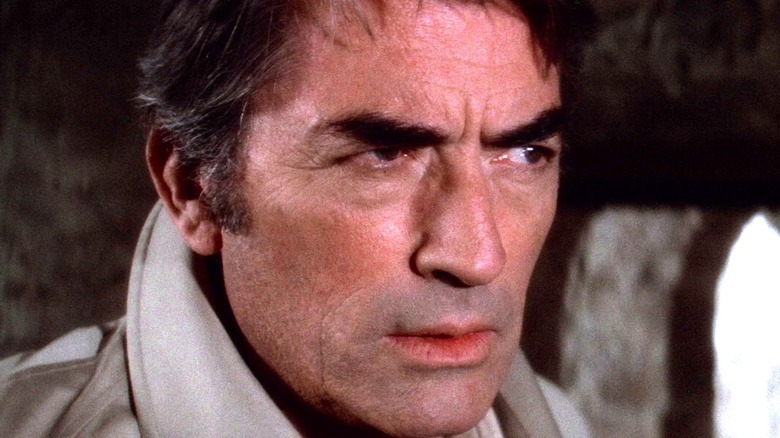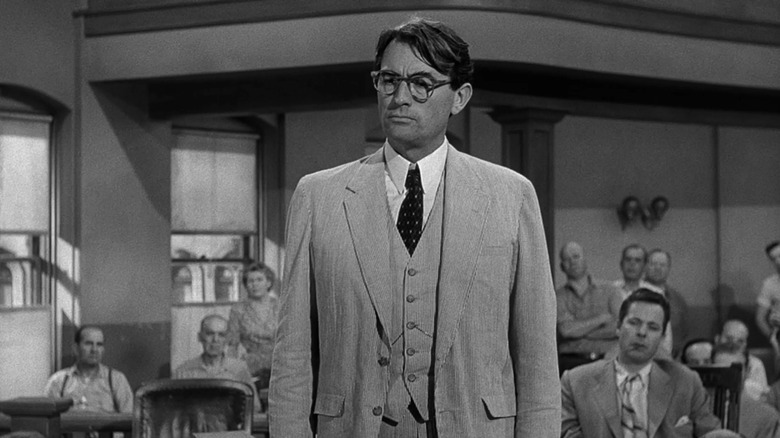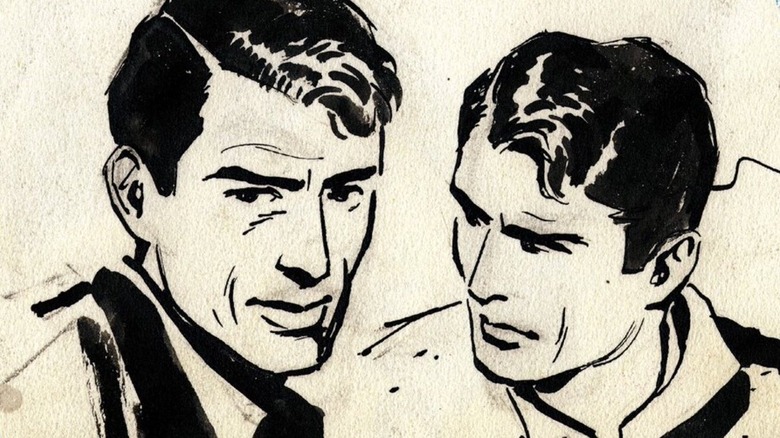Batman Comics Used An Iconic Hollywood Star As The Model For The Dark Knight
1986 was an important year for DC Comics. "Crisis on Infinite Earths" rebooted the decades-old continuity, and Frank Miller reinvigorated Batman with "The Dark Knight Returns." Miller's tale depicted an aged Bruce Wayne coming out of retirement to fight the evils of the 1980s, from street gangs to the Cold War to Ronald Reagan. If you've ever wondered what the beginning of dark and gritty Batman was, it was this book.
The next year, DC was relaunching the main "Batman" title for the "Post-Crisis" era, and Miller was the obvious choice to kick it off. The result was "Year One," running four issues from "Batman" #404-407. The book follows Bruce Wayne's early days as a crime fighter when Gotham City was menaced by the mob, not super-villains. Batman refines his tactics through trial and error and slowly wins the trust of James Gordon — not yet a commissioner, but a rare honest detective in a corrupt police department.
Unlike "The Dark Knight Returns," Miller didn't draw "Year One" himself; he re-teamed with artist David Mazzucchelli, whom he'd last worked with on "Daredevil: Born Again." Miller's Batman was an aging mass of muscle, whereas Mazzucchelli's is thinner and more handsome; he's not yet been hardened by decades of vigilantism. In fact, Bruce Wayne in "Year One" looks a bit ... familiar. When his features aren't hidden beneath a cowl, he looks uncannily like actor Gregory Peck.
That's not a coincidence. The paperback collected edition of "Batman: Year One" includes Mazzucchelli's early sketches, with annotations confirming he used Peck as the model for his rendition of Bruce Wayne.
A classic movie star look
Gregory Peck was, undeniably, one of the greatest stars in Hollywood during the Golden Age (1940s-1960s). He had both leading man charisma and serious dramatic chops.
Peck was born in 1916 in California — Gregory was actually his middle name, preceded by Eldred. He came across acting while a student at the University of California Berkley and then moved to New York, appearing on Broadway and studying with the famous acting teacher Sanford Meisner. In just a few short years, Peck was back home on the West Coast and a Hollywood star; he got an Oscar nomination for only his second film, 1944's "The Keys of the Kingdom," about a Catholic missionary in China.
Peck had a brief tenure as Alfred Hitchcock's leading man (in 1945's "Spellbound" and 1947's "The Paradine Case") and enjoyed consistent work over the next decades. However, his most remembered role wouldn't come until 1962: Atticus Finch in "To Kill A Mockingbird," adapted from Harper Lee's novel. Atticus, the father of protagonist Scout, is a lawyer in Great Depression-era Alabama who defends Tom Robinson (Brock Peters), a Black man wrongfully accused of raping a white woman. Peck continued acting even as he aged and Hollywood changed; he starred in Richard Donner's 1976 horror film "The Omen," bringing class to the film's sensationalism.
For the sake of this piece though, Peck's most Batman-esque part is in the original "Cape Fear." He plays Sam Bowden, a lawyer who helped put away the rapist Max Cady (Robert Mitchum). Eight years later, Cady is free and out for revenge. The film climaxes with Bowden holding Cady at gunpoint, urging him to finish him off. Bowden declines with a lengthy and vindictive speech, saying such quick revenge would be too easy compared to Cady rotting in jail.
He took the words right out of Batman's mouth.
Why Gregory Peck was the perfect model for Batman
Mazzucchelli apparently hasn't confirmed why he chose Peck when drawing Bruce Wayne, but it's an influential choice. "Kingdom Come," drawn by Alex Ross, features an aged Batman who looks much like an older Gregory Peck (take note of the thick eyebrows). "Year One" and "Kingdom Come" are cape comics striving for prestige, so invoking an actor of Peck's caliber lends gravitas.
Let's look at Peck's performances for some other possibilities. Both Batman and Atticus Finch are crusaders for justice; the latter was ranked by the American Film Institute as cinema's greatest hero. Peck also had a deep voice, of the kind that could frighten criminals and comfort the harmed.
However, while he was boyishly handsome and most famous for playing good guys, Peck had an edge too. He had some villainous roles on his resume, such as Nazi doctor Josef Mengele in "The Boys from Brazil." He also played Captain Ahab in the 1956 "Moby Dick," a vengeful man on an obsessive quest. Sound like a certain caped crusader? Even Atticus isn't soft; take the scene where he shoots a rabid dog. "Fatherly" doesn't just mean loving (to quote fantasy author Jay Kristoff, "Father is another name for God in a child's eyes"), and a harsh edge is a necessary ingredient for a great Batman.
Using a real person as a model also reflects how both Mazzucchelli and Ross's art styles are realistic — in different ways. Mazzucchelli emphasizes the urban, neon-lit grime of Gotham City, using a downplayed color palette. Ross's exquisite art looks like photos put through a painterly filter.
Bat-fans continue to debate who was the best actor to play Batman (read /Film readers' pick for the best silver screen Dark Knight here). Just imagine if Gregory Peck had been given a turn at playing the Dark Knight.


